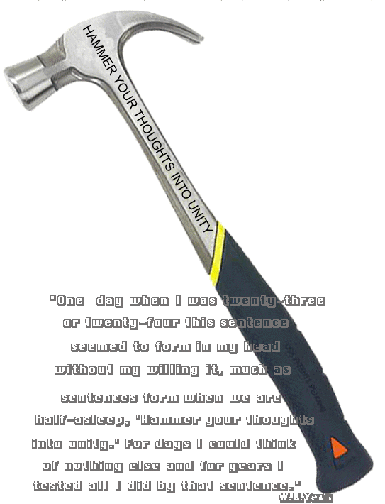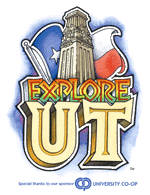
"Only connect! . . .Live in fragments no longer.” E. M. Forster, Howards End (1910), ch. 22

‘One day when I was twenty-three or twenty-four this sentence seemed to form in my head, without my willing it, much as sentences form when we are half-asleep, ‘Hammer your thoughts into unity’. For days I could think of nothing else and for years I tested all I did by that sentence [...]” William Butler Yeats (cited in Frank Tuohy, Yeats <, 1976, p.51 )

The Role of Pictures in the Course
When the Center for Teaching Effectiveness sponsored me as a Wakonse fellow, I learned more about the Carnegie Foundations’s Reinventing Undergraduate Education: A Blueprint for America’s Research Universities, a set of principles to which this university is committed. (http://notes.cc.sunysb.edu/Pres/boyer.nsf) The focus on “places” on campus and off, and the use of group pictures, are attempts to put in practice the tenth principle of the Carnegie Commission: “Larger universities must find ways to create a sense of place and to help students develop small communities within the larger whole.”
I am also especially interested in principle six: “Use Information Technology Creatively. Because research universities create technological innovations, their students should have the best opportunities to learn state-of-the-art practices – and learn to ask questions that stretch the uses of technology.”
One of the questions that stretch the use of this technology concerns student participation in the “publication” of their courses on the internet. I try to increase students’ involvement in and ownership of the course by including in our web site not only their own multimedia but many of my pictures of them participating in class activities. They often show the pictures to their parents and friends, with the result that our website becomes a combination of student memories as well as pedagogical “publications.” Such sites give prospective students an idea of what a course is like, provide immediate feedback to parents when the students are enrolled, and, if preserved, encourage alumni support in the following years. .”
In class one day a student asked if in twenty years he would be able to take his children to our web site and point to himself in the class pictures? I did not know what to tell him, for in twenty years I may well be dead, and am not aware of any university policy on the preservation of faculty websites. It seems to me that the library or some such agency needs to take over the conservation of university teaching/research web sites, especially when student pictures and writings are involved.
What about pictures of the teacher? Pedagogical documents become published in some sense when they are put on the internet, cited, and discussed by others. My composite web site was included in a research study called “English Studies' Online Representations of Work, Product, and Workplace” by M. Hess of the University of Louisville. Hess noted that I choose “graphics and textual content to offset the professionalism of [my] homepage's textual content, and work to humanize [my] space through including the personal alongside the professional.” He also observed that I chose images of my life that connect with my courses in nature writing. Throughout the world, he suggests, professors “humanize” themselves for students in this way:
(http://www.louisville.edu/~mshess01/nomadfaculty.html).
